

Coffee Culture in Japan
|
For somewhere well known to be a primarily tea-drinking country, Japan has an unexpectedly passion for coffee. The brew was first introduced to Japan in the 1600s when European merchants first arrived and traded with the Japanese. However, their movements were restricted to an island in Nagasaki called Dejima, and so their practice of drinking coffee did not catch on with the general populace. Coffee was not sold until the late 1800s, when Japan started importing coffee in bulk in 1877. Japan’s first coffee shop opened in Tokyo in 1888, and since then, drinking coffee has steadily become an established habit for the Japanese.
In the beginning, coffee was only drunk by adults who lived in the city as they had the financial capacity to access and afford the drink. Coffee shops served instant coffee, and its popularity soon spread to other city centres all over the country. Later, the nationwide proliferation of vending machines and the availability of canned coffee in both hot and cold forms further perpetuated the drink’s popularity, especially amongst the younger generation of Japanese people. Today, more people than ever are drinking coffee; in fact, Japan is ranked third behind the United States and Germany as one of the biggest importers of coffee worldwide! |
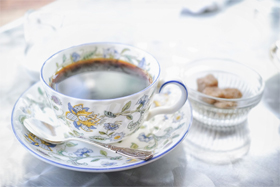 © Pakutaso 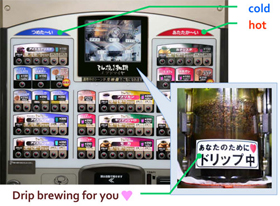 © TOYO VENDING CO., LTD. |
|
Of course, Japan has also adjusted coffee-brewing methods accordingly to suit local tastes. Coffee connoisseurs may know that Japan is known for excelling in manual brewing techniques such as the siphon and hand drip methods. Though the siphon method was actually invented in Berlin by a French woman in the late 1800s, it was Japan that perfected the method. Japanese companies like Hario and Yama designed high quality siphons that are now highly regarded by baristas worldwide. Japanese baristas also use the siphons differently compared to their Western counterparts, resulting in a taste that is uniquely Japanese.
The hand drip method is, if not one of, the most popular method of coffee brewing in Japan. This method is a test of patience and control; hot water has to be poured over the dripper (where fresh coffee grounds are distributed evenly on a filter) slowly and evenly so as to draw out the deep flavour of the coffee. Baristas may not even keep the first pour! After the first pour, baristas wait for the grains to settle before pouring more hot water to make an actual cup of coffee. In 2019, Japan Creative Centre hosted an event featuring Coffee Specialists from Okada Coffee and Sweets for an exclusive talk and demonstration of the Japanese hand drip coffee method. Yohei Kubota, Coffee Specialist and the Champion of the All Japan Hand Drip Competition 2017, led the event, explaining in detail tips and tricks to brew an award-winning cup of coffee. Five volunteers were also given the chance to try making their own hand drip coffee under his guidance. |
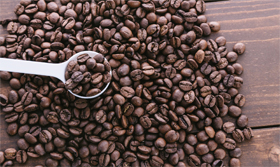 © Pakutaso 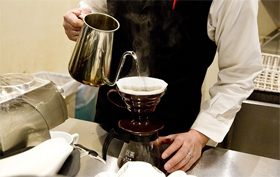 © Web Japan 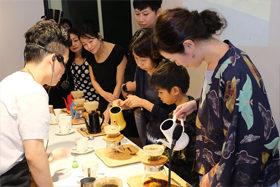 © JCC |
|
With so many coffee trends booming all over the world, methods that have been polished by Japanese sensibilities have managed to stand the test of time, with many worldwide recognising these methods as reliable ways to achieve a delicious cup of specialty coffee.
Singapore also has a thriving coffee culture. Just like in Japanese city centres, youths make a habit of visiting trendy cafes to sip on intricately crafted cups of coffee and snap photographs of latte art. However, much of Singapore’s coffee culture also hinges on the traditional coffee shop, or the kopitiam as it is known in local vernacular. In kopitiams, traditional tools like the kopi sock are used to brew tins of thick and fragrant coffee and tea, which is then mixed with condensed milk and sugar to create a sweet yet robust drink perfect for mornings. Japan Creative Centre has come up with a series of posts on the Embassy of Japan’s Facebook page to introduce some of the interesting delights of coffee culture in Singapore. If you would like to learn more about the kopi sock, or how to order coffee like a local, remember to check out the posts on their Facebook page here. |
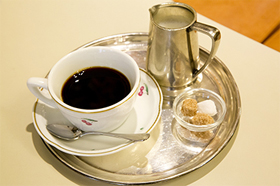 © Web Japan 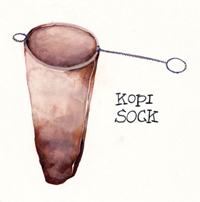 © JCC |
Resources
|
All Japan Coffee Association. (n.d.). PDF. |
|
Japan Creative Centre 4 Nassim Road, Singapore 258372 +65 6737 0434 / jcc@sn.mofa.go.jp https://www.sg.emb-japan.go.jp/JCC/ Nearest parking at Orchard Hotel & Delphi Orchard |
 |